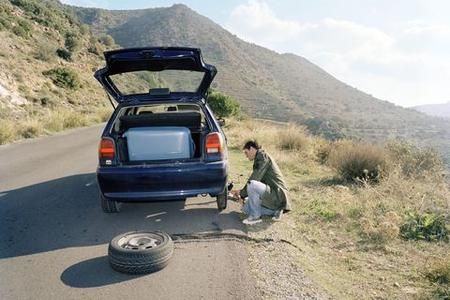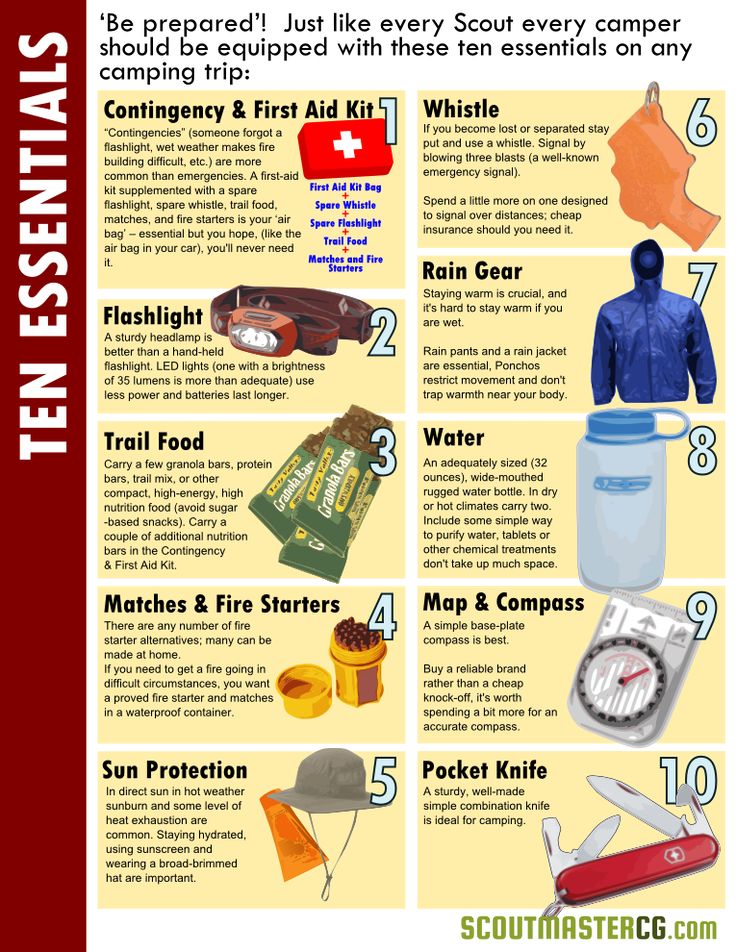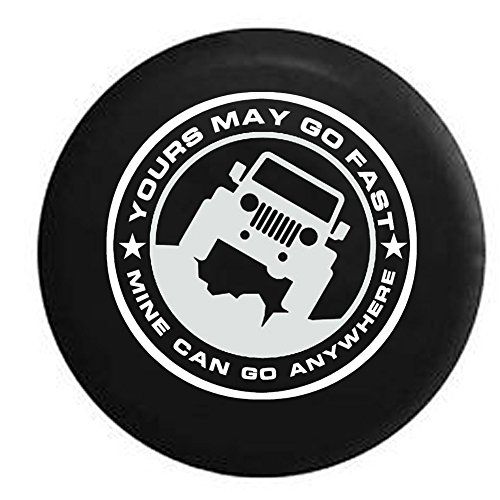A spare tire may come in handy in emergency cases like a flat tire. However, it should be used as a temporary option only because you cannot expect the same vehicle performance as regular tires provide.
So, how fast can you drive on a spare tire? The maximum speed of a spare tire is 50 mph, and you must not drive farther than 70 miles.
Else, it would cause vehicle issues like tire wear, tire blowout, flat tire, or damage to car parts.
Table of Contents
A spare tire is an additional tire carried on the trunk of a car. It can be a full-size spare tire or a donut tire.
1. With a full-size spare tire
A full size spare tire can be a matching spare tire of your traditional tires. Meaning they have the same size, weight, and perhaps, even brand.
Therefore, they don’t have specific limits, especially on the highway. You might be able to drive more than 70 miles without lowering the speed.
The max speed on spare tire will be 90 miles if you have to stretch a little to reach the destination as soon as possible.
2. With a donut tire
A donut tire, also known as a donut spare, is smaller than regular tires because it was designed to be light, space-saving, and portable. Its primary purpose is to replace a flat tire and bring your vehicle to the nearest repair shop.
Donut spares are small, light, and have minor tread construction than regular tires. Therefore, to be safe, the fastest you can go on a donut spare is 50 mph, and the farthest you can drive is not more than 70 miles.
This limitation makes it unsafe to drive on a donut on the highway.
1. Tire Wear
Donut spares are smaller, lighter, and have little tread, so driving faster than 50mph will cause the wheel to work harder and lead to tire wear quickly.
2. Tire blowout
Since donut tires do not have the significant features of regular tires, exceeding spare tire speed limit will cause the tire to blow out and lose control of the vehicle.
Worst, it may lead to an accident like a car crash, vehicle collision, or hitting pedestrians.
3. Flat Tire
Donut tires are constructed with less resistance to bumps, road hazards, or projectiles. So driving them faster and longer than their service design may put them at risk for another flat tire emergency.
4. Damage to car parts
In general, when donut tires are overused, they cause damage to car parts such as:
Safety and Convenience
Suppose your full-size spare tire matches the current specifications of your regular tires. In that case, you can drive safely without worrying about another emergency.
In that case, you can drive safely without worrying about another emergency.
On the other hand, when you drive on a donut, it is advisable to quickly visit the nearest auto repair shop.
Cost
Donut spare tires cost around $50-300, while full-size spare tire may start at $100 or have the same price as your regular tires.
Don’t use the spare tire if you experience a flat tire on one of the driving wheels. Instead, get the replacement from the non-driving wheel.
Replace the tire in the non-driving wheel with the full-size spare tire. As a result, you won’t feel a big difference in ride quality.
If you put a donut tire on a driving wheel, there is a huge shift in handling because it is undersized. It may throw you off the road when you turn or slide when you brake because there is much weight to carry.
If you don’t have a choice but to use the donut tire in front, drive a short distance. Don’t take other risks. Calling a towing service is a safer option if there’s a long way to go.
Calling a towing service is a safer option if there’s a long way to go.
Driving too fast on a donut spare tire can cause flat tires, tire wear, or tire blowout, leading to loss of vehicle control and road accidents. It may also damage vehicle parts such as the brakes, steering system, suspension, and transmission.
The optimal speed for driving on a donut tire is 50 mph. Reddit users attest that driving more than 70mph is dangerous.
Can I drive a spare tire on the highway?
Indeed, driving on a spare tire on the highway is dangerous because the average speed required is 50mph.
If there is no other way, you might drive on a full-size spare tire and not a donut tire.
Not knowing how fast can you drive on a spare tire is dangerous.
Driving spare tires at more than the recommended speed of 50 mph and mileage of 70 miles will cause more damage to the vehicle, not limited to flat tires or tire blowout. Worst of all, accidents may happen.
Although full-size spare tires are ideal, they are not available for small-sized vehicles. Even if donut spare tires are not for long-term use, they are reliable for short distances.
If you want to know more about fixing flat tires, don’t hesitate to ask some questions.
Editor’s Note: This blog has been updated in 2021 to reflect current industry standards.
In older cars, every model came with a spare tire that matched the tires already on the vehicle. Over the years, car manufacturers have realized the spare tire is used so infrequently, it does not make much sense to equip every car with a full-sized spare. For this reason, manufacturers began leaving a space-saver spare (otherwise known as a donut) in place of a full-size spare.
Nowadays, spare tires should never be a permanent replacement, begging the question, how long can you really drive on a spare tire? The type of spare tire in your vehicle makes a difference in how long and how far you can drive before fixing your tire or buying a new tire.
These narrow, compact spares are designed to save space and weight in the vehicle, allowing the manufacturers to build a smaller car. However, the tire itself is not built to last. Your owner’s manual will give recommendations for driving time and speed. A general rule of thumb is to drive no farther than 70 miles and no faster than 50 miles per hour before replacing your donut with a new tire.
The biggest reason why you should avoid prolonged use of space-saver or donut tires is that they have little to no tread, making the spare vulnerable to road hazards and projectiles. It is also much smaller than the other 3 tires, making it spin faster to keep up with the moving car.
Run-flat tires are becoming more common as manufacturers realize they cost less to maintain than traditional tires. If you drive a recent model BMW or a MINI, your car likely came with run-flat tires. These tires are tougher than most tires but are not designed to last forever, such as a full-spare tire.
Rather than including a spare tire, these run-flat tires are built to withstand most road hazards, including punctures. Rather than going flat or blowing out (as traditional tires do), a run-flat tire can continue to drive after punctured for about 50 miles before needing to be replaced. However, these tires cost more to replace than traditional tires.
While you have a bit more room to travel on these types of tires, it is important to inspect your tire as soon as you are aware of any change in tire pressure. This gives you an idea of how long you have until you have no choice but to have your tire replaced.
How Long Can You Drive on a Full-Size Spare Tire?
For years, cars were built with spare tire wells capable of carrying a full-size spare. On many older cars (and a few newer models), this is still the case. If you bought a truck, SUV, or another large vehicle, your car probably is equipped with a full-size spare. While a full-size spare is heavier and requires a larger space for storage, these tires are more durable and can handle a drive similar to a regular tire.
On many older cars (and a few newer models), this is still the case. If you bought a truck, SUV, or another large vehicle, your car probably is equipped with a full-size spare. While a full-size spare is heavier and requires a larger space for storage, these tires are more durable and can handle a drive similar to a regular tire.
Once you have taken your vehicle to an auto repair shop and learned that the punctured tire is irreparable, you can request the spare tire to be put on the original rim.It is important to note that a full-size spare tire is usually not produced by the same manufacturer as the rest of the tires on your vehicle, meaning it will handle differently than the other tires. We suggest buying a new tire as soon as you can afford to, but this can easily buy you some time.
Christian Brothers Automotive was born out of the idea of not just being an auto repair shop, but also a neighbor. Our mission is simple: to take root in the local communities we serve and to create an uncommonly great experience for customers in need of auto service and repair. To have your tires inspected or to replace a spare tire, please do not hesitate to call or visit your local Christian Brothers Automotive shop. We have 240 plus locations nationwide that are locally owned and operated, providing complete auto care and repair solutions near you.
To have your tires inspected or to replace a spare tire, please do not hesitate to call or visit your local Christian Brothers Automotive shop. We have 240 plus locations nationwide that are locally owned and operated, providing complete auto care and repair solutions near you.
Spare tires are useful insurance, but most are not designed to replace a flat tire indefinitely.
Not all spare wheels are created equal, and to better understand which spare tire your vehicle is equipped with, please refer to your vehicle owner's manual. Temporary spare tires generally do not have the life expectancy that regular tires do. Unlike a normal car tyre, spare tires can only have one polyester ply in the sidewall and two steel belts with a ply of polyester in the tread, meaning they can't provide half the performance and safety that an average tire can provide.
In this article we will try to describe all types of spare wheels available, and tell you how long you can drive on each of them.
These little spare tires are commonly referred to as donuts or space savers. They are very popular because they are lightweight and do not take up much space in the luggage compartment of your car. Due to the low weight, even a person who is not at all predisposed to physical activity will not find it difficult to lift and install such a spare wheel. By the way, how to do it in the field, without the help of specialists, read here.
However, because the donuts are smaller and lighter, they lack two key features of conventional tires: strength and stability. Most of these spare tires have a speed limit of up to 90 km/h. With such a spare tire, you can expect to cover a distance of 80 km, some of them can cover up to 110 km. This should be enough to find the nearest tire shop and fix the damaged tire, or find a shop where you can buy a brand new tire if the previous one is no longer repairable.
From the above, we can conclude that the donut spare wheel is not recommended for long trips or pulling with its replacement with a normal, standard wheel.
Some car manufacturers fit their vehicles with full size spare tires. They are, of course, heavier than space savers and take up much more space in the trunk, but they are more durable and durable. They are able to last you much longer than donuts. However, these tires may have a different tread pattern or rubber compound than a conventional tire. This can affect overall handling and safety on the road.
Although these tires are more durable, they are primarily designed to get you to your destination before you deal with the tire problem. In addition, do not forget that the place for the spare wheel in the car is empty, and it should be filled as soon as possible before another tire is punctured.
If you do not have a spare tire in your vehicle, then your vehicle may be equipped with run-flat tires. BMW and MINI typically install these tires during production. This type of tire is tougher than other tires and can withstand a puncture and keep going. However, they are also not designed to be ridden forever.
However, they are also not designed to be ridden forever.
Most run-flat tires recommend replacing as soon as you notice a puncture. As a rule, they are designed for a distance of up to 100 km in a punctured state, then they must be replaced. Compared to regular tyres, running-flat replacements are not cheap. Some craftsmen can patch run-flat tires, but manufacturers do not recommend going down this path.
One of the advantages of these tires is that you can get to the nearest car wheel shop at speeds up to 80 km/h, i.e. almost like a breeze.
Every motorist should remember that any type of spare tire is only there to keep you moving forward and replace a punctured tire as quickly as possible. The spares are a temporary replacement, and s, while full-size spare tires may look exactly like the rest of your car, they don't have the same performance as s and can get you in trouble on the road.
Remember, your car's tires are the only thing that keeps you and your passengers on the road, so you should never speculate on your own safety or the safety of those around you.
Efim Rozkin
"Dokatka" instead of a full-fledged spare wheel today is not uncommon. This is how automakers reduce their costs while increasing profits. On the other hand, “dokatka” means less weight and smaller size. And to get to the tire fitting with the help of such a wheel-crutch is more than enough. But there are situations when you have to go to the repair shop for more than one hundred kilometers.
And here, many motorists ask themselves: how long can you drive on a "dock" to be safe?
Photo from open sources
First, let's figure out what a "dokatka" is. And this is actually a spare wheel, but the size of the stamped disk and the tire itself, put on it, is different from the impellers installed on the car. You can find a "dokatka" in the models of European automakers. They, instead of at least some kind of spare wheel, may even have a repair kit. What can not be said about Asian brands. These complete their cars with a full-fledged “reserve”, which is much more preferable in our latitudes and with our quality of the roadway.
And this is actually a spare wheel, but the size of the stamped disk and the tire itself, put on it, is different from the impellers installed on the car. You can find a "dokatka" in the models of European automakers. They, instead of at least some kind of spare wheel, may even have a repair kit. What can not be said about Asian brands. These complete their cars with a full-fledged “reserve”, which is much more preferable in our latitudes and with our quality of the roadway.
However, whatever the spare tire, it is always summer. If one wheel is pierced on your car and it needs repair, then any wheel lying in the trunk (unless, of course, you change it for the winter) is a “dock”. Believe me, it will not be difficult for you to see the difference in the behavior of a car on three winter wheels and one summer one, no matter what your level of driving training is. Actually, therefore, it is recommended to install the “dokatka” on the rear axle. And in winter, this rule is categorical, even despite the fact that you have to tinker, throwing the wheels from front to back.
Photo: AvtoVzglyad
And now about how much you can drive on the "dokatka". Let's take a closer look at it first. A thin underwheel has a smaller grip area in the tire contact patch with the road; a different, by no means effective protector; The dokatka is not as strong as a regular tire, and wears out rather quickly (savings again).
All these shortcomings, of course, affect the handling, and the consumption, and the decrease in braking efficiency, and negatively on the suspension of the car, which is most important, on the safety of both the driver and other road users. And that is why the speed at which its use is permissible is always written on the wheel-crutch. As a rule it is 50-80 km/h. Which is quite enough to get to the nearest service station.
As for distances, if you follow the rules for the safe use of the “stowaway”, you can drive more than a dozen, and even, if the situation requires it, a hundred kilometers.